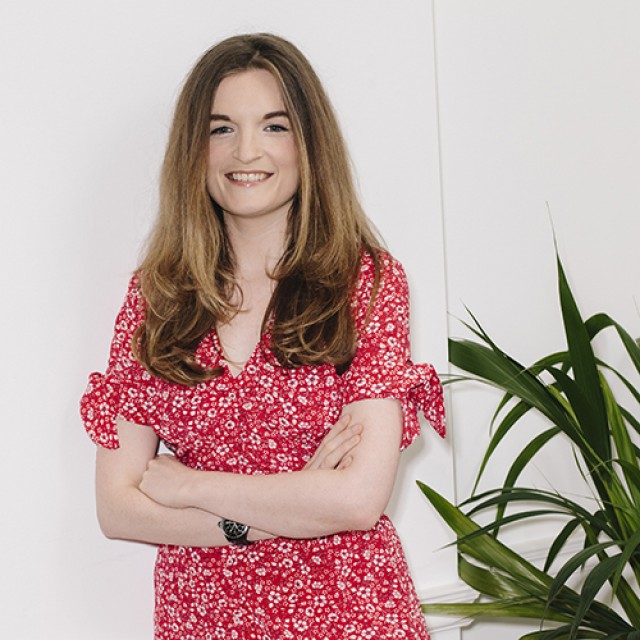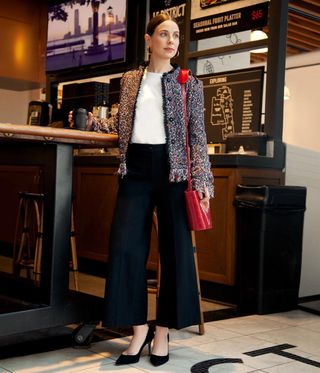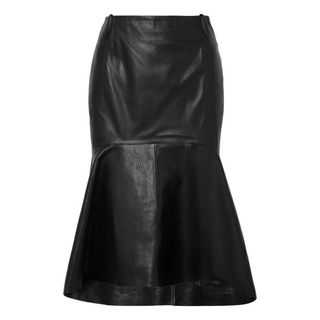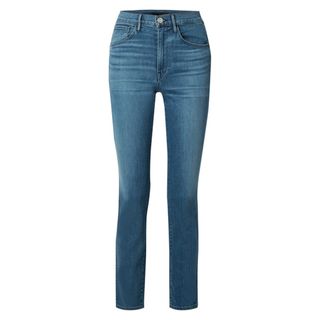All the Clothes I Loved and Lost When I Weight Restored


We sat in a circle and talked about our minds playing tricks on us.
"You know that you didn’t gain any weight from last week to this week,” the dietician told me. And she was right. I had already weight restored weeks ago, gaining an estimated 17 pounds since entering intensive outpatient treatment. But I also hadn’t come to terms with the reality of what this meant for me in my life.
I could write a book listing the things that suck about having to weight restore. Right up there with having to come to terms with what your now-healthy body looks like? Realizing you don’t fit into your clothes. This problem is especially difficult for people who love and invest in fashion the way I do.
As a fashion editor, much of my conversations revolved around what I wanted to buy, or what I was wearing, or how other people looked in what they were wearing—all difficult and triggering subjects for someone in eating disorder treatment. But for me, more than anything, the sting of looking in my closet and seeing the thousands of dollars I had spent on pieces I cherished, but bought while sick, was too much to bear.
So I asked, "What do I do with the clothes that don’t fit me anymore?”
The answer to this question was quite simple to my group leader. You get rid of them. You donate them. You sell them. You throw them in the trash. Why have a reminder of your illness hanging in front of you like a headstone every morning as you get dressed?
For me, I was keeping them for two reasons: one more disordered, and one more practical, in my mind at least. The disordered thought: If I have these clothes hanging in my closet, maybe one day I’ll be able to fit into them.
The practical thought, though: This is money. These were investments. This is a $1200 Brock floral skirt. Or a $950 Chanel jacket I bought at a consignment store. And this leather pencil skirt with a gold exposed zipper from The Row? Don’t. Even.
I wish this article continued with a great success story where I take all the clothing out of my closet and valiantly make piles of DONATE and KEEP and come out with a KonMari-ed closet and a smile on my face. Unfortunately, that is not reality. Nor is it the reality of anyone who has to face their clothes not fitting anymore.
I couldn’t afford to replace The Row skirt, and I would never find that vintage Chanel jacket that no longer fit my arms. And that sucked. It made me angry. It made me cry. It made me wish I had never gotten better. It made me wonder if I could be fashionable and recovered at the same time.
Guess what: You can.
Once I finished a few anxiety attacks, I realized that having to buy new clothes after getting rid of so many of my most prized (and expensive) possessions was a great way to remind myself what I loved about fashion:
The new designers. The multitude of styles. The ability to experiment. The hunt.
So I took out my phone and made a list of the things I really loved that I had gotten rid of:
- Vintage Chanel jacket
- Work-appropriate leather skirt
- Wear-with-anything blazer
- High-waisted jeans
These were my top four, and yes, that Chanel jacket was number one on said list.
Instead of donating everything, I sold what I could on TheRealReal and used the money I made to (you guessed it) buy a new vintage Chanel jacket, which I can confidently say I live in. Consignment shops and online second-hand dealers are great places to look if you need to replace pieces that you no longer can wear.
I went on a total denim hunt, using it not only as an opportunity to find my next great pair of jeans but also to learn more about the denim market. I would have stuck to my same old pair had I not had to discover some of my now-favorite brands like Agolde and 3X1.

An investment piece, for sure, but also an instant upgrade to any outfit.

I am still looking for a replacement to that fab leather skirt that I miss dearly, but I have my eyes on this one from Balenciaga, which fingers crossed, will go on sale.
The list of clothes I lost when I weight restored was pages long. And a month out from my first beach vacation in a while (a trip to Jamaica for my birthday), I’m faced with one of the toughest shopping excursions to date: the swimsuit.
All the old ones—the Eres investment, the Solid & Striped classics—that were a size or two (or three) too small, are long in the trash, and I take to Instagram to ask my followers what their favorite swim brands are, terrified that the responses I get will freak me out.
Instead, I’m met with a bevy of new designers, most of which are embracing different body types in their campaigns.
I take a deep breath, and I start shopping.
About The Chain
The Chain is a New York–based nonprofit that provides peer support for women working in the fashion and entertainment industries who are struggling with or recovering from an eating disorder.
The Chain was founded in December 2017 by Christina Grasso and Ruthie Friedlander, both in recovery from anorexia, after they encountered a need for a support network that addresses the challenges in eating disorder recovery unique to the fashion and entertainment industries.
The Chain aims to create a safe place for this population to share their experiences and gain insight through conversation, support, and community building. The Chain is peer-led and is not intended to be a substitute for professional medical advice, diagnosis, or treatment.
Learn more about The Chain here.
Next up: I've Lived in NYC for 10 Years and This is How I Managed Stress on a Budget
Last week: Consider These 5 Eating Disorder Myths Debunked
Disclaimer
This article is provided for informational purposes only and is not intended to be used in the place of advice of your physician or other medical professionals. You should always consult with your doctor or healthcare provider first with any health-related questions.



